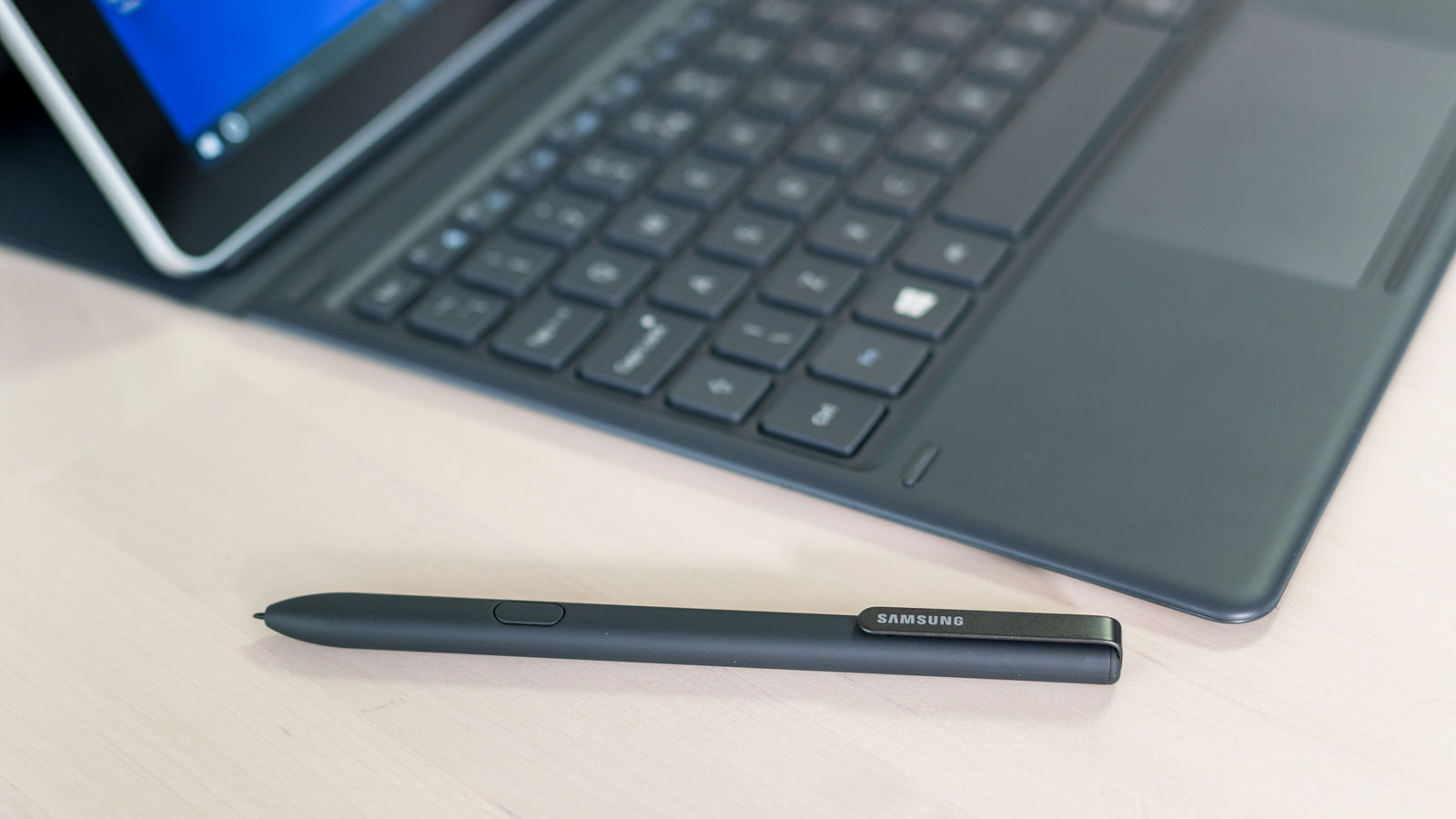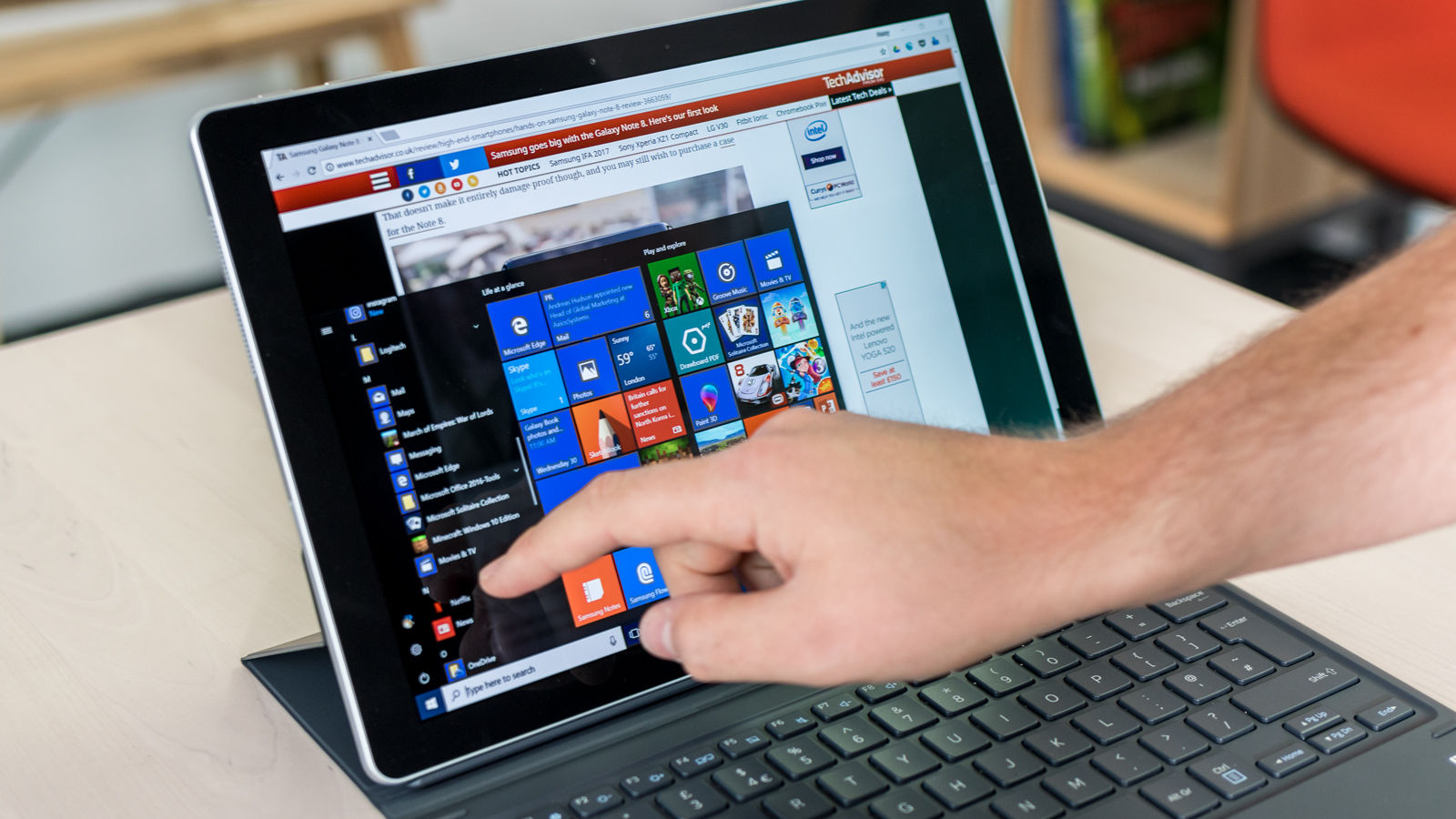Therefore it’s no surprise that Samsung has updated its flagship Android tablet, the Galaxy Tab S3, but also rebranded and updated this, its high-end Windows 2-in-1 tablet computer. Last year’s Tab Pro S was disappointingly unrefined. Enter the Galaxy Book. There are 10.6in and 12in versions and I reviewed the latter. I’ve used the former too, and the 12in model is the better one because you’ll want the larger screen for most computing tasks, and also because you need it to get the better specs (the 10.6in only comes with an m3 chip). It’s a solid computer (yes, it’s a full computer) that I sometimes wished was a full on laptop as it does those things way better than it does tablet stuff. Still, it’s progress, and it’s easy to use, but not fun in the same way an iPad Pro or even Surface Pro can be. Then again, this is mainly a machine for work, with a small amount of play thrown in. Check out the Galaxy Book 2, which comes with Qualcomm instead of Intel.
Price and availability
The 12in Galaxy Book is available in the UK directly from Samsung from £1,099 with 128GB storage and 4GB RAM. You can up that to 256GB and 8GB for £1,269. Both are Wi-Fi only. My review unit is the latter. You can also opt for the high-end model with 4G capabilities, coming in at a lofty £1,439 and is the only option for 4G with that screen size. There are only two 10.6in models, both with a fixed 64GB and 4GB RAM; £649 for Wi-FI only and £739 for 4G. Just be aware that the 10.6in has a less capable processor and inferior display tech with an FHD TFT compared to the sAMOLED in the 12in. Bearing in mind that the sub-par Tab Pro S started at £849, the £649 entry level price is excellent and – yes, Samsung! – includes the folio keyboard case and the S Pen. Brilliant start.
Design and build
Concentrating on the 12in Galaxy Book, it’s a machine that Samsung has pleasingly updated from the Tab Pro S. It’s not actually that desirable aesthetically, and its relative bulk is more austere than Microsoft’s angular Surface Pro or Huawei’s svelte MateBook E. But its damn functional, and that is squarely where Sammy is aiming here. The tablet itself is attractive but not made of the most premium materials. The silver casing is plastic, and it’s noticeable. We’ve come to expect metal and rightly so. It’s disappointing to see the £1,000+ Galaxy Book made of plastic. The design language is pretty far removed from the smooth, sleek Galaxy S8 phones, but it’s still an improvement on the TabPro S, a device let down by the keyboard case. It was too flimsy meaning the tablet would often flop over while typing. No such problem here, with the magnetic four-position stand surprisingly sturdy, with good viewing angles. Tablets like this are normally let down by their keyboards ( iPad Pro) but others are triumphs because of it (Surface Pro). Luckily the Galaxy Book falls into the latter category. The keyboard folio has a Pogo connector akin to the iPad Pro’s. This means it needs no charge, and auto pairs with the tablet as soon as the two are docked. It is great to type on and the keys have a laptop-eque travel within the relatively slim case. They have a few millimetres gap between them also, far preferable to the Tab Pro S’ flush, gapless layout that was hard to master. They are also mercifully backlit, adjustable to three levels (and off). They sit above a just about big enough trackpad that has a good tactile physical click to its one button and good mouse travel. A clue to its laptop pretensions is the rear camera and logo placement – both central when held landscape. The silver metallic back is only broken by said camera, while the front side bezel is a business-like black. You can choose between a white or black keyboard though. In the box with the improved keyboard is Samsung’s S Pen, the stylus you can also use with its Note range of phones. It’s either silver or black depending on the colour of keyboard, and completes a very attractive 2-in-1 package that folds away. There’s even a removable sticky tab to attach to the folio if you want to store the pen, but it’s odd that it’s not built in and feels like an afterthought. Yes, it’s all still more annoying than just using a laptop, and I still can’t quite see myself trading in a laptop for this even though the port situation is largely the same. But if you like this form factor, the Galaxy Book is nearly up there with the Surface Pro in terms of design, and that can only be a good thing.
Features and specifications
The 12in model measures 291.3×199.8×7.4mm and weighs 754g. That’s an impressive weight for a machine that has a powerful seventh generation Intel Core i5 Dual Core 3.1GHz CPU inside. Obviously it’s a bit heavier with the keyboard cover attached, but it’s still a pleasing weight. It has a superior Super AMOLED FHD display with an incredible 2160×1440 resolution that looks as good as those numbers sounds (the 10.6in model only has a TFT display with 1920×1280). My review unit ran the Core i5 with the high-end 8GB RAM and it zipped along at a pleasing pace. Just bear in mind that the money you save plumping for 4GB will result in slower speeds if you push it. Unlike the Surface Pro or Matebook E, Samsung has opted not to offer an i7 version, possibly as the company is still trying to gauge how many sales it can muster, particularly now that Samsung does not sell laptops in Europe. Once I got into the workflow changes required to adjust to a smaller screen, I worked full days on the Galaxy Book, battery permitting. Samsung promises 11 hours of power for the 12in model, but I didn’t find I got that from real world use. Taking the unit off charge at 9.30am I found myself reaching for the fast-charger at around 3pm. Six hours of fairly continuous use isn’t bad for a 2-in-1, but it’s far off what is promised, and still much less than a competing laptop. This is an example of where the Galaxy Book shows its, and the form factor’s, limitations. For most people, sacrificing the laptop form factor isn’t worth it for the loss in battery power. The inclusion of the S Pen and all that it brings is still below what professional designers or illustrators will want; they are more likely to plump for a Wacom tablet to meet their needs. Samsung includes Autodesk’s Sketchbook software to encourage this kind of usage, but you’ll have to pay for a subscription. Samsung’s free Samsung Notes app is only good for that; simple note taking with the S Pen. It means that for the casual consumer, this device only really adds note taking function at the expense of daily usability and the necessarily lower battery both thanks to the compromised form factor.
Benchmarks
The Galaxy Book performed well in real world use and it’s good to see our benchmarking prove its worth against the competition. It out-performed the equivalent i5 Surface Pro in each test apart from PC Mark 8, but the scores are so close that you won’t notice.
Suffice to say while the Galaxy Book, like any 2-in-1 , isn’t up for hardcore gaming. But for lighter gaming and all other normal video needs it’s more than adequate.
Using the S Pen
The S Pen included in the box is decent, the same one Samsung ships for the Tab S3, and doesn’t require charging unlike the Apple Pencil. Just don’t lose it, as a replacement will cost you £89. I found that in Samsung Notes, the experience of writing directly onto the screen was a good one, but that thicker lines in some of the pen modes displayed clearly blurred. This should not be so for a display that is stunning in video playback and general use, so a shame that the bundled pen software isn’t quite up to the task. It felt too like there was not as many levels of pressure sensitivity despite Samsung claiming there are 4,096. Sketchbook evidenced better use of this fact but for artists, compared to the Apple Pencil, the S Pen is lagging behind.
Software
Windows 10 runs as you’d expect on the Galaxy Book, and is best when used with the keyboard docked. The trackpad on keyboard cases is a necessity, but space restriction means they are always a tad small and on the 12in Galaxy Book it takes a few swipes to go from the left to the right of the screen. But that’s what you get with hybrids. Everything works like it does on a desktop or laptop, except for when you unclip the keyboard and go into tablet mode. Windows is tricky to use with just touch controls, so you also have the option to enter tablet mode, which is designed to be easier to use and navigate like you might on an Android tablet. Even though it’s a good idea, it’s still a bit clumsily executed, and I can imagine most users using the keyboard to find that all important Netflix video rather than prodding about a full operating system with your finger. The landscape screen has an odd 16:10.7 aspect ratio that means in portrait mode it’s fiddly, oddly weighted and not at all fun to use. The design also hollows out the botton edge necessarily for docking with the keyboard, so overall it’s a device that really should be used as a laptop. The 12in i5 will be more than up to the task of powering all but the most intense of multitaskers. It certainly fares better than the Core m3 chip in the 10.6in model would under the same workloads. Henry is Tech Advisor’s Phones Editor, ensuring he and the team covers and reviews every smartphone worth knowing about for readers and viewers all over the world. He spends a lot of time moving between different handsets and shouting at WhatsApp to support multiple devices at once.








